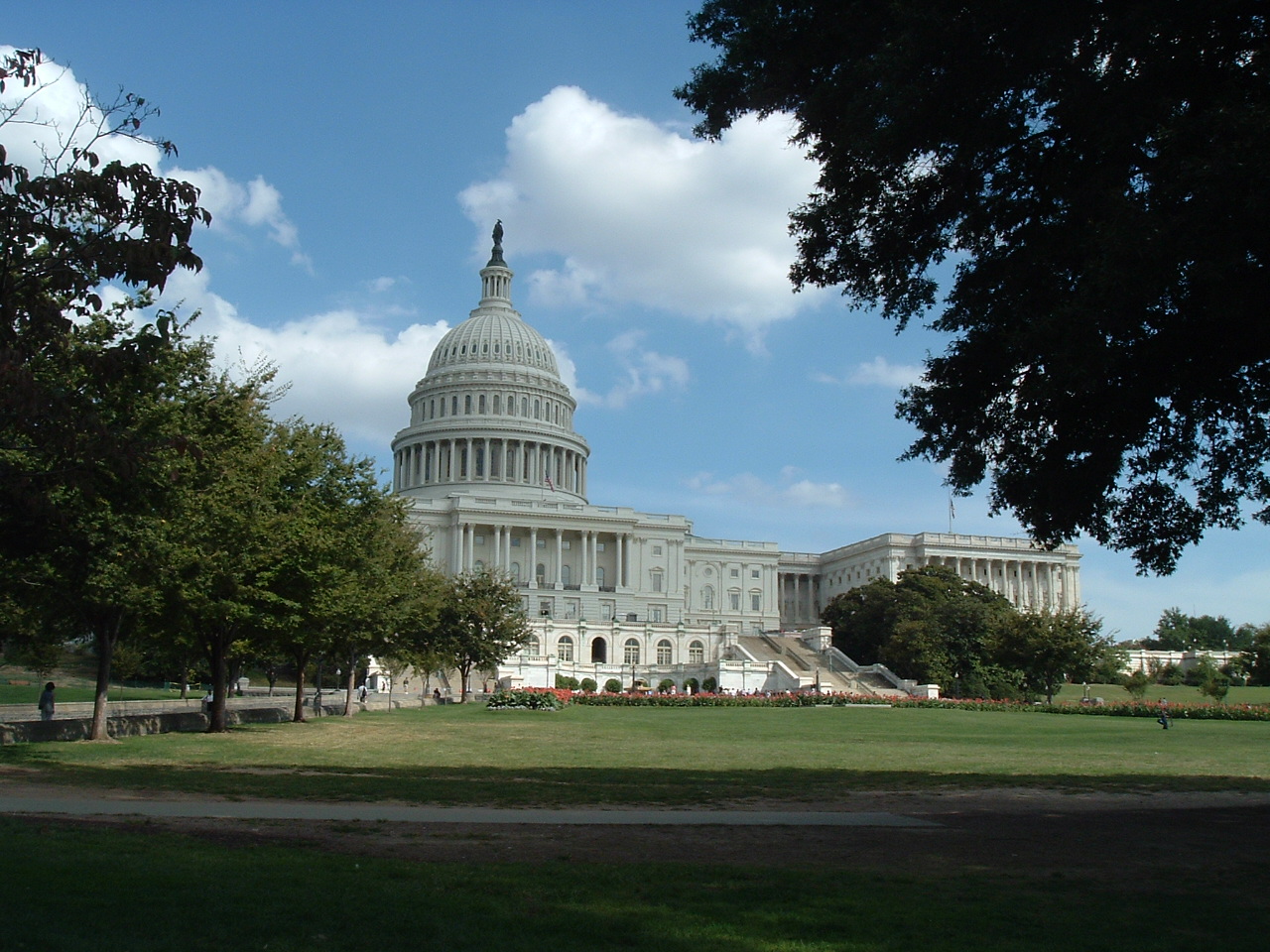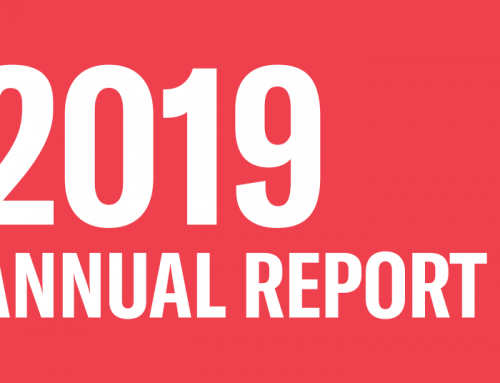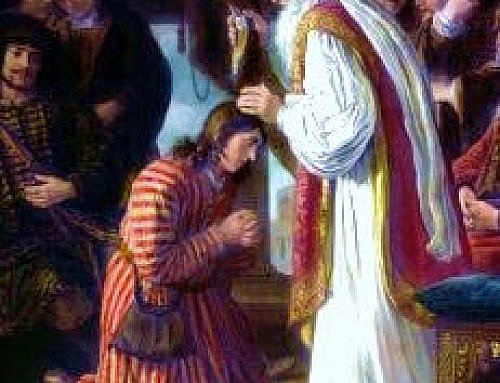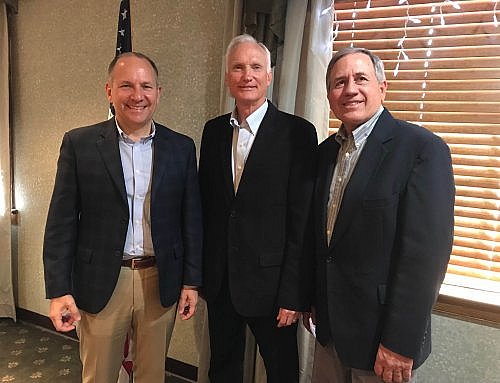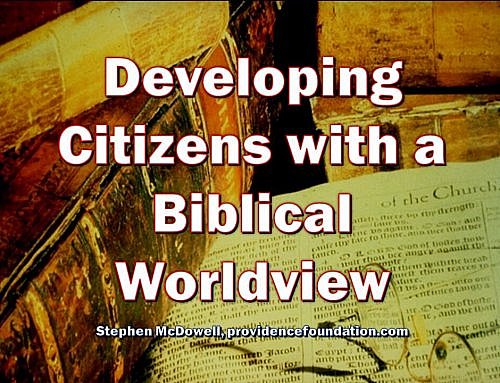By Stephen McDowell
Throughout history many nations have built monuments to record victories in battle and people conquered. Numerous countries have erected memorials to honor their gods, be they human leaders or fictitious deities. Every nation’s monuments and national symbols reflect the heart of the people and identify what they believe is the source of their nation’s greatness and achievements. In this respect America is unique among the nations of the world. Our monuments have no record of people or nations conquered or military encounters resulting in destruction of cities and empires. America’s monuments and symbols contain the declaration that the source of our birth, liberty, and greatness is God.
A tour of historic sites in America, and particularly the Capital city, reveals that America was a nation birthed by men who had a firm reliance upon Almighty God and His Son Jesus Christ. Inscribed upon our buildings, monuments, and national symbols is our nation’s faith in God. A sampling of this evidence seen in some of our monuments and buildings in Washington, D.C., follows.
The Library of Congress
Within the Great Hall of the Jefferson Building are two climate controlled cases, one contains a Gutenberg Bible and the other a hand-copied Giant Bible of Mainz. The display of these two bibles is very appropriate because, in the words of President Andrew Jackson, “The Bible is the rock upon which our republic rests.” Many Biblical inscriptions can be found on the ceiling and walls including: “The light shineth in darkness, and the darkness comprehendeth it not”; and “Wisdom is the principal thing therefore get wisdom and withall thy getting, get understanding.”
In the Main Reading Room are statues and quotes representing fields of knowledge. Moses and Paul represent Religion, with the inscription, “What doth the Lord require of thee, but to do justly, and to love mercy and to walk humbly with thy God.” Science is represented by, “The heavens declare the glory of God; and the firmament showeth His handywork.” History: “One God, one law, one element, and one far-off divine event, to which the whole creation moves.”
The Supreme Court
The Biblical foundation of American law is evidenced throughout this building. On the outside East Pediment is a marble relief of Moses holding tablets containing the Ten Commandments. Engraved on the oak doors at the entrance of the Court Chamber are the Roman numerals I through X, and above the heads of the Justices is a carved marble relief with a large stone tablet containing I through X in between two allegorical figures, representing The Power of Government and The Majesty of the Law (each set of numerals represents ancient law, that is the 10 commandments). In the main foyer are marble busts of previous Chief Justices, many of whom were Christians such as John Jay, the first Chief Justice, and John Marshall, the most prominent in the early years. Each day the Court is in session, a crier ends his call announcing the formal opening by declaring, “God save the United States and the Honorable Court.”
The Capitol Building
All of the eight large paintings in the Rotunda present aspects of our Christian history. A few include: The Landing of Columbus — Columbus said he was convinced to sail because “it was the Lord who put into my mind” and that “the Gospel must still be preached to so many lands.” The Baptism of Pocahontas — This shows the baptism of one of the first converts in the Virginia colony . The Virginia charter said they came to propagate the “Christian Religion to such People, as yet live in Darkness and miserable Ignorance of the true knowledge and worship of God.” Departure of the Pilgrims from Holland — shows the Pilgrims observing a day of prayer and fasting. William Brewster is holding an open Bible upon which is written: “The New Testament of our Lord and Savior Jesus Christ.” “God With Us” is written on the ship’s sail.
Also in the Rotunda are carved reliefs including: Penn’s Treaty with the Indians — Penn called his colony “a holy experiment” and said of it that “my God that has given it to me . . . will, I believe, bless and make it the seed of a nation.” The Landing of the Pilgrims — “having undertaken for the Glory of God and advancement of the Christian faith.”
In God We Trust, our national motto, is inscribed in letters of gold behind the Speaker’s rostrum in the House Chamber. Also in this chamber, above the central Gallery door, is a marble relief of Moses, the greatest of 23 noted law-givers (and the only one full-faced). In 1867 the House Chamber was the meeting place for the largest Church congregation in America. This was not unusual for Churches had been meeting in the Capitol from its beginning.
Statues of many early leaders are displayed throughout the Capitol. Most of these people were Christians (and many were ministers), including George Washington, James Garfield, Samuel Adams, Rev. Peter Muhlenberg, Rev. Roger Williams, Rev. Marcus Whitman, Daniel Webster, Lew Wallace, Rev. Jason Lee, John Winthrop, Rev. Jonathan Trumbull, Roger Sherman, and Francis Willard. Many plaques in the Capitol declare our faith as well, including: In God We Trust, placed above the Senate main door; “What hath God Wrought!” — the first message sent over the telegraph in 1844, found on the Samuel F.B. Morse Plaque outside old Supreme Court Chamber.
The Prayer Room contains an open Bible sitting on an altar in front of a stained window showing Washington in earnest prayer. Behind him is etched the first verse of Psalm 16, “Preserve me, O God, for in Thee do I put my trust.”
The National Archives
A bronze design on the floor of the Rotunda contains the Ten Commandments with Senate and Justice to the right of them, which symbolizes that our legal system has its origin in God’s law. The two most important civil documents on display reflect Biblical principles of government. These are: The Declaration of Independence (1776) — contains such ideas as man is created in the Divine image, all men are equal, man is superior to the state, the state exists for man. The United States Constitution (1787) — Christian ideas include: the reign of law; trial by jury of peers under law; Creator endowed rights, not government granted; Christian self-government; religious freedom; private property rights.
The Washington Monument
From the tallest structure in Washington a message of Praise be to God goes forth. Engraved upon the aluminum capstone on the top of this 555 foot monument is Laus Deo. Inside the structure are carved tribute blocks with many Godly messages: “Holiness to the Lord,” “Search the Scriptures,” “The memory of the just is blessed,” “May Heaven to this union continue its beneficence,” In God We Trust,” “Train up a child in the way he should go, and when he is old, he will not depart from it.”
The White House
An inscription by the first President to inhabit the White House, John Adams, is cut into the marble facing of the State Dining Room fireplace. It reads: “I pray Heaven to Bestow the Best of Blessings on THIS HOUSE and on All that shall hereafter Inhabit it. May none but Honest and Wise Men ever rule under this Roof.” Each President has attended church, associated with the Christian faith, taken the oath of office with their hand on a Bible, and referred to God in their inaugural addresses.
The Lincoln Memorial
The words engraved upon the walls of the Lincoln Memorial reflect the Christian faith and providential perspective of our 16th President, Abraham Lincoln. On the south wall is the Gettysburg Address which ends exclaiming “that this nation, under God, shall have a new birth of freedom — and that government of the people, by the people, and for the people, shall not perish from the earth.” On the wall of the north chamber is Lincoln’s Second Inaugural Address which shows his knowledge of the Scriptures: “Both read the same Bible and pray to the same God, and each invokes His aid against the other. It may seem strange that any men should dare to ask a just God’s assistance in wringing their bread from the sweat of other men’s faces, but let us judge not, that we be not judged. The prayers of both could not be answered. That of neither has been answered fully. The Almighty has His own purposes. ‘Woe unto the world because of offenses; for it must needs be that offenses come, but woe to that man by whom the offense cometh’ (Matthew 18:7).”
The Jefferson Memorial
The author of the Declaration of Independence and America’s third President, Thomas Jefferson, though unorthodox is some of his religious views, claimed to be a Christian, attended church throughout his life, and held to a Biblical worldview, which is reflected in the inscriptions in the memorial. The excerpt from the Declaration speaks of Creator endowed rights. The inscription from Jefferson’s Virginia Statute for Religious Freedom states: “Almighty God hath created the mind free. All attempts to influence it by temporal punishments or burthens . . . are a departure from the plan of the Holy Author of our religion. . . . No man shall be compelled to frequent or support any religious worship or ministry or shall otherwise suffer on account of his religious opinions or belief, but all men shall be free to profess and by argument to maintain, their opinions in matters of religion.” A third inscription from his Notes of the State of Virginia says: “God who gave us life gave us liberty. Can the liberties of a nation be secure when we have removed a conviction that these liberties are the gift of God? Indeed I tremble for my country when I reflect that God is just, that his justice cannot sleep forever.”
There are many other monuments and buildings in Washington that proclaim America’s faith in God. At Arlington National Cemetery, the Tomb of the Unknown Soldier monument, carved from a single rectangular block of marble to honor unknown soldiers who gave their life for the cause of liberty, bears the inscription: HERE RESTS IN HONORED GLORY AN AMERICAN SOLDIER KNOWN BUT TO GOD. On the front facade of Union Station three Scripture verses are engraved: “Thou has put all things under his feet.” “The truth shall make you free.” “The desert shall rejoice and blossom like the rose.”
Conclusion
A brief tour of sites in our nation’s Capital reveals that Christianity is the source of America’s liberty and prosperity. In the words of the U.S. House of Representatives in 1854: “The great vital element in our system is the belief of our people in the pure doctrines and divine truths of the gospel of Jesus Christ.” We as a nation must not forget that God is the author of our liberty, for if we do we shall lose it.
Sign up for a 2015 Spiritual Heritage Tour
* * * *
To learn more order the book, In God We Trust Tour Guide by Stephen McDowell and Mark Beliles, published by the Providence Foundation.
Contact: Providence Foundation
PO Box 6759
Charlottesville, VA 22906
Phone: 434-978-4535,
Email: info@providencefoundation.com
www.providencefoundation.com

